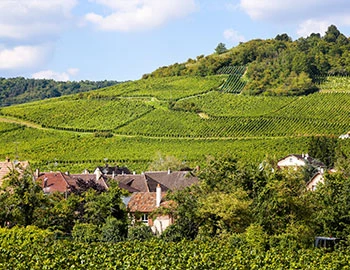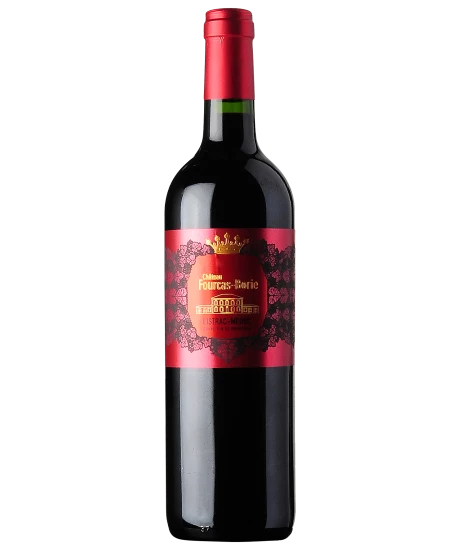Château Fourcas-Borie 2014
Château Fourcas-Borie 2014
AC Listrac-Médoc, 750 ml

Description
This wine from Ducru-Beaucaillou is proof that good Bordeaux is also available at a reasonable price. The fragrance is floral-fruity with roses, lilies and violets, black cherries, figs and plum compote. With its great taste intensity and smooth tannins, it is a versatile food companion.
Attributes
| Grape variety: | Merlot, Cabernet Sauvignon, Petit Verdot |
| Producer: | Château Fourcas-Borie |
| Origin: | France / Bordeaux / Listrac |
| Ripening potential: | 5 to 12 years |
| Drinking temperature: | 16 to 18 °C |
| Food Pairing: | Crispy roast chicken, Pork fillet with plums, Wild fowl, Hearty stew with pulses, Moroccan specialities |
| Vinification: | fully destemmed, Pumping over |
| Harvest: | strict selection |
| Maturation: | in partly new and used barriques/ Pièces |
| Maturation duration: | 12 months |
| Volume: | 13.5 % |
| Note: | Contains sulphites |
Château Fourcas-Borie
The Bruno Borie family, which is also the owner of Château Ducru-Beaucaillou 2e Cru Classé in Saint Julien), acquired the Château Fourcas Dumont in 2009 and from then on named it Château Fourcas-Borie.
This Bordeaux Château is located in the north of Listrac, a village in Haut-Médoc, and disposes of 74 hectares of vineyards in Fourcas and Moulin du Bourg (clay, gravel and lime soil). The average age of the vines is about 30 years.
The investments made by the Borie family in cellar technology and the efforts made in the vineyards, coupled with the know-how of Château Ducru-Beaucaillou, already bore their first fruits with the 2010 vintage. The sum of all these endeavours has resulted in a velvety, already very elegant wine, with a "reasonable" price, which is even suitable for festive occasions.
The cuvée is a classic blend of the following grape varieties: 50% Merlot, 40% Cabernet Sauvignon and 10% Petit Verdot. The grape varieties and parcels are fermented separately in temperature-controlled stainless-steel tanks. The subsequent ageing is carried out for twelve months in partly new and partly used French barrels.
The renowned wine maker Eric Boissenot advises the Château and vinifies its wine.
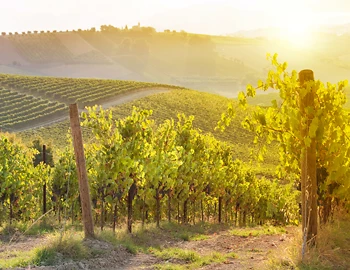
Petit Verdot
Bordeaux’s secret weapon
It is commonly said that the Petit Verdot originated in Bordeaux. But genetically, it is closer to a group of vines from near the Pyrenees, which are most likely descended from wild clematis. In French, these wild plants are called “lambrusques”, and the Petit Verdot is also known under the synonym Lumbrusquet. It is a high quality grape: very dark and spicy with notes of cassis and graphite, plenty of robust tannins and strong acidity. Most major Bordeaux contain a small proportion of Petit Verdot. Appropriately, it is valued wherever wines are produced according to the Bordeaux recipe. For example, in Italian Maremma or in California, where it covers the largest area worldwide. It is almost never vinified purely by itself. Incidentally, its name, derived from “vert”, meaning green, alludes to its Achilles heel: in cool weather it tends to form small, seedless green grapes.
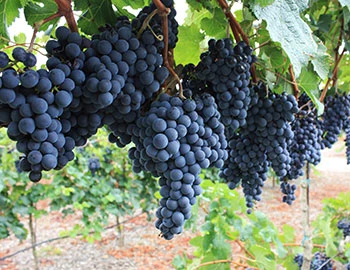
Merlot
Everybody’s darling
Merlot is the most charming member of the Bordeaux family. It shines with rich colour, fragrant fullness, velvety tannins and sweet, plummy fruit. It even makes itself easy for the vintner, as it matures without issue in cool years as well. This is in contrast to the stricter Cabernet Sauvignon, which it complements as a blending partner. Its good qualities have made the Merlot famous worldwide. At over 100,000 hectares, it is the most-planted grape in France. It also covers large areas in California, Italy, Australia and recently in Eastern Europe. The only catch is that pure Merlot varieties rarely turn out well. Its charm is often associated with a lack of substance. Only the best specimens improve with maturity. They then develop complex notes of leather and truffles. This succeeds in the top wines from the Bordeaux appellation of Pomerol and those from Ticino, among others.
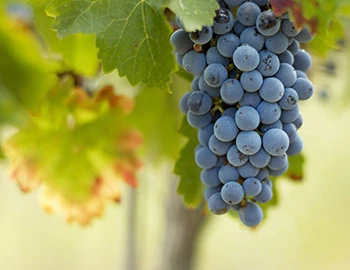
Cabernet Sauvignon
The backbone of Bordeaux
The Cabernet Sauvignon gives the Bordeaux its backbone, yielding deep violet wines with powerful tannins and endless ripening potential. It is the top dog in Médoc, and is placed in all five premier crus of Bordelais. When young, it often appears strict and unapproachable, but with advancing years, its tannins round off. It is wonderfully velvety, and yet always maintains its freshness. Typical flavours include cassis, graphite and cedar. Wherever Cabernet Sauvignon is found, Merlot is not far away. It complements the robust structure of Cabernet with softness, fruit and richness. The Cabernet Sauvignon is the most-exported vine in the world. It delivers persuasive qualities in Italy as an ingredient of the Super Tuscan, or as the flagship variety from California. There, it is lovingly titled “Cab Sauv”. Meat fans should be aware that it fantastically accompanies a grilled entrecôte. The family tree of Cabernet Sauvignon is surprising: its parents are Cabernet Franc and the white Sauvignon blanc.
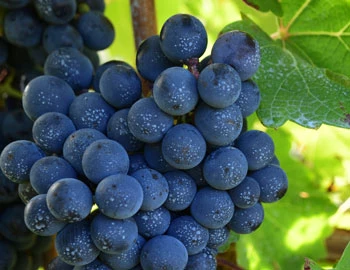
Cabernet Sauvignon
The backbone of Bordeaux
The Cabernet Sauvignon gives the Bordeaux its backbone, yielding deep violet wines with powerful tannins and endless ripening potential. It is the top dog in Médoc, and is placed in all five premier crus of Bordelais. When young, it often appears strict and unapproachable, but with advancing years, its tannins round off. It is wonderfully velvety, and yet always maintains its freshness. Typical flavours include cassis, graphite and cedar. Wherever Cabernet Sauvignon is found, Merlot is not far away. It complements the robust structure of Cabernet with softness, fruit and richness. The Cabernet Sauvignon is the most-exported vine in the world. It delivers persuasive qualities in Italy as an ingredient of the Super Tuscan, or as the flagship variety from California. There, it is lovingly titled “Cab Sauv”. Meat fans should be aware that it fantastically accompanies a grilled entrecôte. The family tree of Cabernet Sauvignon is surprising: its parents are Cabernet Franc and the white Sauvignon blanc.

Listrac
Listrac-Médoc: special climate, special soils
With a cultivation area of only 650 hectares, Listrac is the second-smallest commune appellation in the Médoc, and its wines have a distinctively unique character, with a robust, vigorous nature. The basis for this rests in the special terroir of this appellation. Listrac is also the only appellation in the Médoc where the Merlot variety assumes a defining role. The reputation of the appellation is due in large part to the high quality of the roughly 20 châteaux with cru bourgeois status.
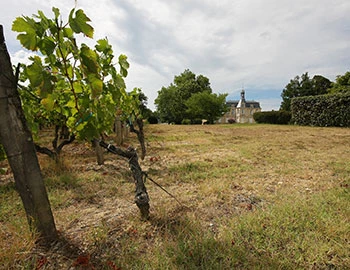
Bordeaux
Bordeaux: high prestige, high quality
With a total area of around 115,000 hectares, Bordeaux may not be France’s largest wine-growing region, but it is certainly its most prestigious. The range of wines produced here today is enormous: ranging from red everyday wines with a great relationship between price and quality to exclusive, and accordingly expensive, premier crus. Elegant white wines and noble sweet specialties round out the spectrum.
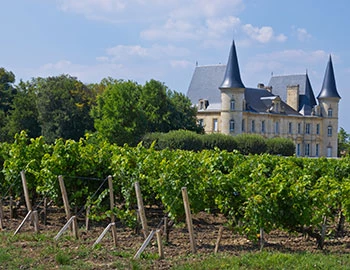
France
France – Philosophy in a bottle
According to French philosophy, wine should be an expression of the soil and climate. They use the word “terroir” to describe this. Terroir makes every wine different, and many especially good. French wine is regarded worldwide as an expression of cultural perfection. The French believe that humans are responsible for the quality of the berries, the vine variety for their character, and nature for the quantity. This philosophy can be expressed succinctly as: “the truth is the vineyard, not the man.”
